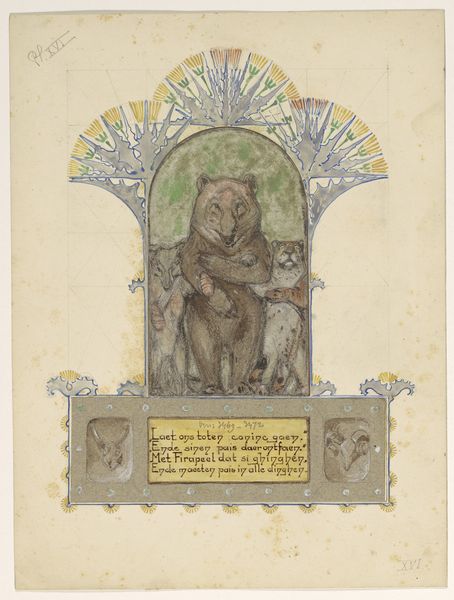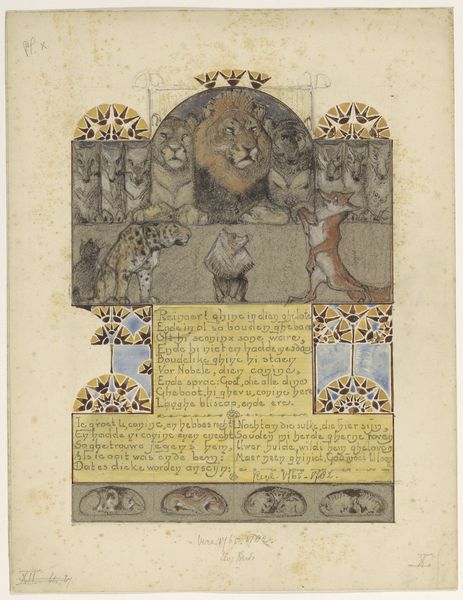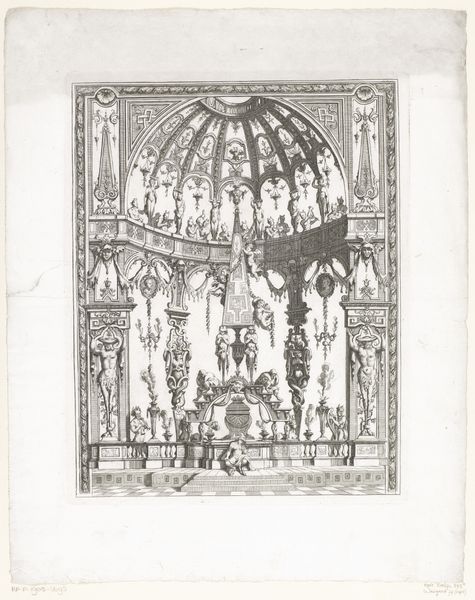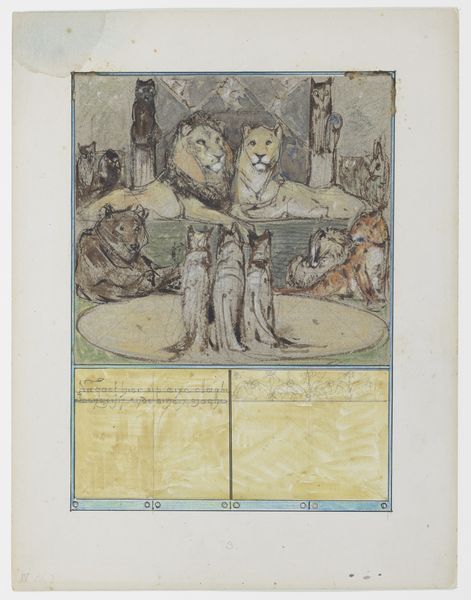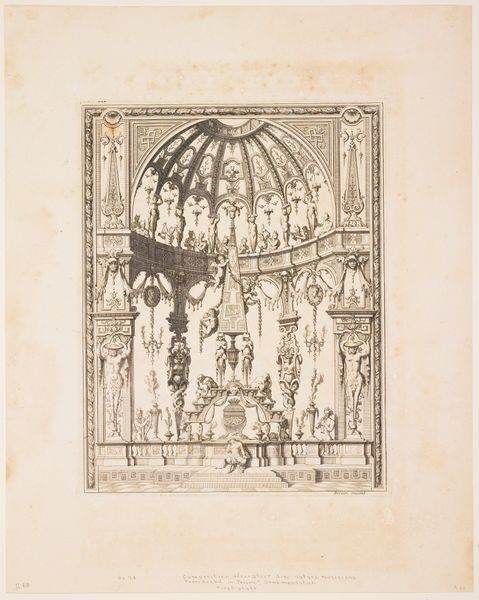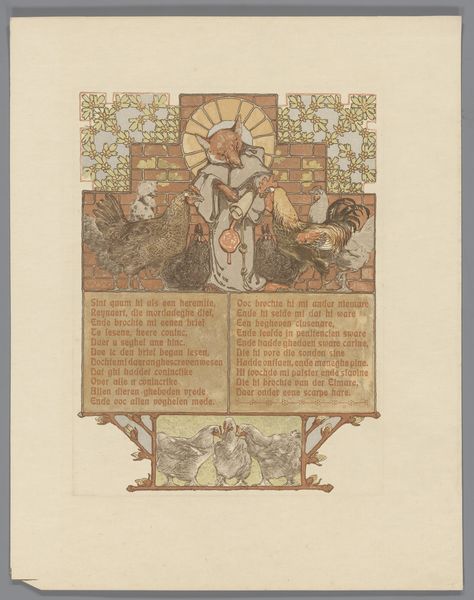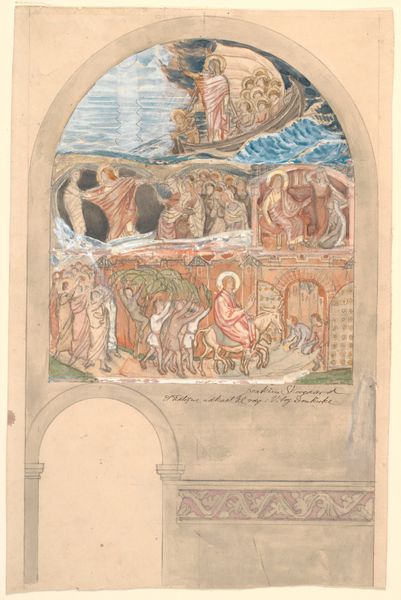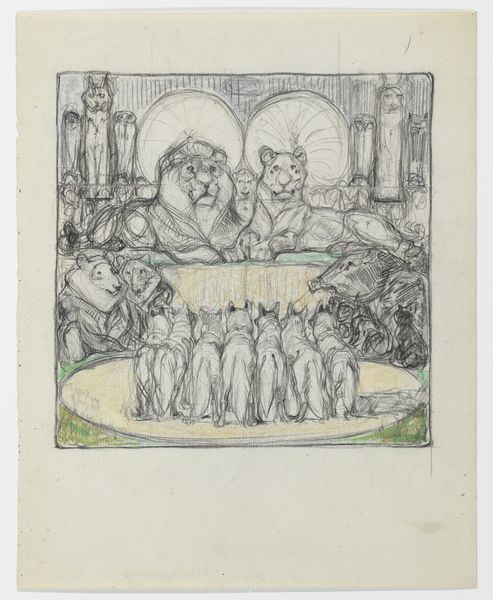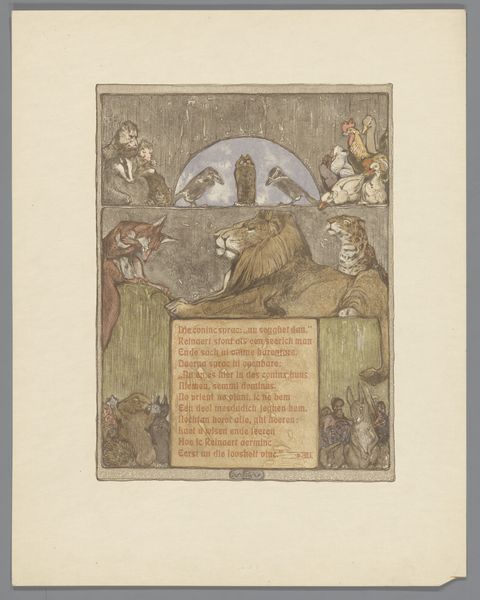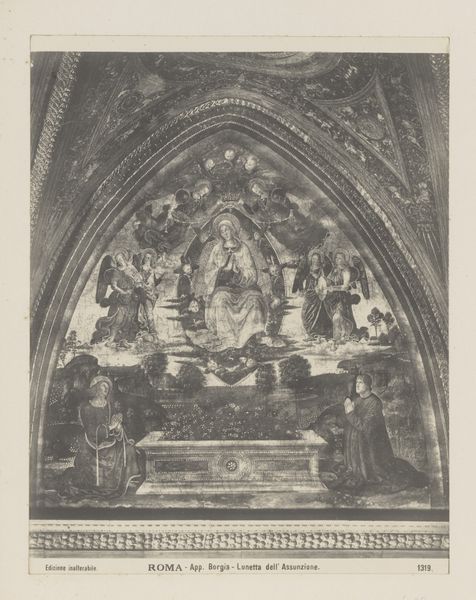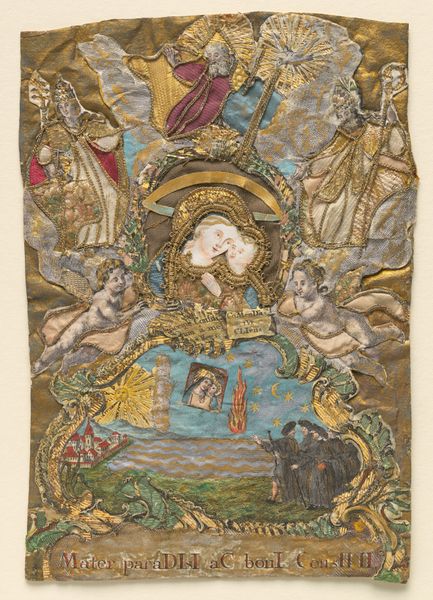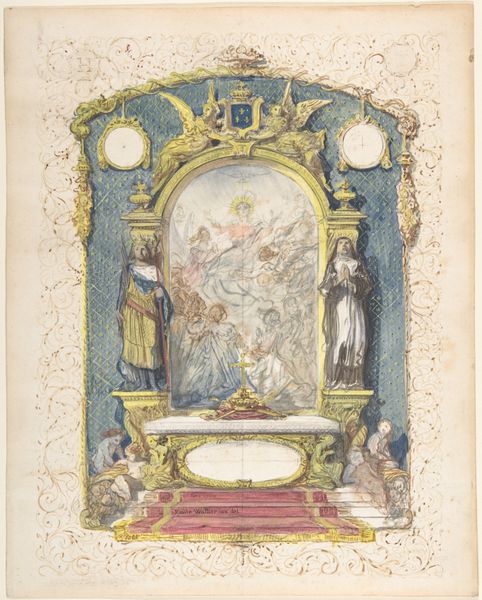
Reinaert spreekt tot koning Nobel en de verzamelde dieren 1866 - 1939
0:00
0:00
drawing, coloured-pencil, watercolor
#
drawing
#
coloured-pencil
#
medieval
#
narrative-art
#
figuration
#
watercolor
#
coloured pencil
#
watercolour illustration
#
watercolor
Dimensions: height 323 mm, width 250 mm
Copyright: Rijks Museum: Open Domain
Curator: Right now, we’re looking at “Reinaert Speaks to King Nobel and the Assembled Animals” by Bernard Willem Wierink, created sometime between 1866 and 1939. It's currently housed in the Rijksmuseum. Editor: Oh, immediately it has this wonderful storybook feel! The watercolor and colored pencil work give it such a soft, almost dreamlike quality. I'm drawn to the kind, yet weary lion figure—he looks like he has heard it all before. Curator: The choice of watercolor and colored pencil is quite interesting, especially given the narrative element. It does soften what can be, at its core, a very pointed social satire in the original "Reynard the Fox" tales. Editor: Satire yes, but isn’t there always that question of who truly holds the power and by what methods, even in something that looks delicate like this? Look at how these techniques almost 'elevate' a subject matter typically resigned to folk traditions or simple illustrations. Curator: Exactly. The artistic choices here invite us to consider the construction of the fable itself—the labour involved in creating such a detailed composition highlights the labor that also went into the distribution of such tales during the Medieval Era. Editor: True. And notice the faux-Medieval frame around it, further blurring the line between object, artifact, and purely narrative device. It's almost like peering into a stage play from another world, full of intrigue. I'm wondering if it challenges notions of "high" and "low" art as it seems like there’s a wink happening at all times. Curator: That's right. Wierink invites a critical reassessment of the very stories that make up our cultural memory. What’s consumption here? How much is craft? Editor: And just consider the lifespan of a narrative. The way Wierink revisited this medieval fable so much later suggests storytelling is never a simple process. Curator: Indeed. Each stroke, each shade carefully applied, makes us reconsider what is timeless and what simply echoes. Editor: So it seems we're not just appreciating a piece of art, but we're participating in the enduring performance of its narrative, questioning its context as it questions ours.
Comments
No comments
Be the first to comment and join the conversation on the ultimate creative platform.
